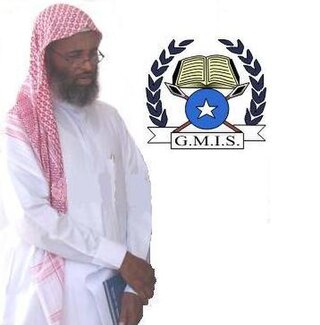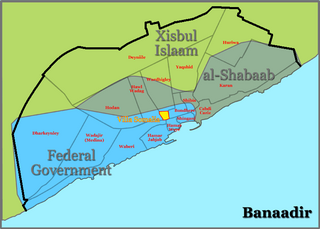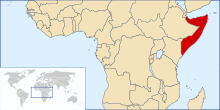
The Ethiopian occupation of Somalia, also called the Ethiopian invasion of Somalia or the Ethiopian intervention in the Somali Civil War, was an armed conflict that lasted from late 2006 to early 2009. It began when military forces from Ethiopia, supported by the United States, invaded Somalia to depose the Islamic Courts Union (ICU) and install the Transitional Federal Government (TFG). The conflict continued after the invasion when an anti-Ethiopian insurgency emerged and rapidly escalated. During 2007 and 2008, the insurgency recaptured the majority of territory lost by the ICU. At the start of 2009 Ethiopian troops withdrew from Somalia, but became re-involved several years later to counter the growing strength of Al-Shabaab.

The African Union Mission in Somalia (AMISOM) was a regional peacekeeping mission operated by the African Union with the approval of the United Nations Security Council. It was mandated to support transitional governmental structures, implement a national security plan, train the Somali security forces, and to assist in creating a secure environment for the delivery of humanitarian aid. As part of its duties, AMISOM supported the Federal Government of Somalia's forces in their battle against Al-Shabaab militants.

Ibrahim Hassan Addou was a Somali scholar and politician.

The timeline of events in the War in Somalia during 2007 is set out below.

The 2009 timeline of events in the Somalia War (2006–2009) during January 2009 is set out below. From the beginning of February the timeline of events in the Somali Civil War (2009–present) is set out following the conclusion of the previous phase of the civil war.

The Somali civil war (2009–present) is the ongoing phase of the Somali civil war which is concentrated in southern and central Somalia. It began in late January 2009 with the present conflict mainly between the forces of the Federal Government of Somalia assisted by African Union peacekeeping troops and al-Shabaab militants who pledged alliegence to al-Qaeda during 2012.

The Battle of Mogadishu (2009) started in May with an Islamist offensive, when rebels from al-Shabaab and Hizbul Islam attacked and captured government bases in the capital of Mogadishu. The fighting soon spread, causing hundreds of casualties, and continued on at various levels of intensity until October. The battle's name usually includes the year, when referenced, in order to distinguish it amongst the nine major Battles of Mogadishu during the decades long Somali Civil War.

Qamar Aden Ali was a Somali lawyer and politician. She was assassinated whilst serving as the Minister of Health in the Transitional Federal Government of Somalia.
Saleban Olad Roble was a Somali politician and a minister in the Transitional Federal Government.

The Battle of Mogadishu (2010–11) began on 23 August 2010 when al-Shabaab insurgents began attacking government and African Union Mission to Somalia (AMISOM) positions in the Somali capital of Mogadishu. Al-Shabaab began its offensive after its spokesman said the group was declaring a "massive war" on troops sent by AMISOM, describing its 6,000 peacekeepers as "invaders". In December 2010 the number of AMISOM troops was increased to 8,000 and later to 9,000. The battle's name usually includes the years, when referenced, in order to distinguish it amongst the nine major Battles of Mogadishu during the decades long Somali Civil War.
The Muna Hotel in the Somali capital of Mogadishu was attacked by al-Shabaab fighters on 24 August 2010. The hotel was known to host government officials and other politicians. More fighting in the city began on 23 August.

This is a 2011 timeline of events in the Somali Civil War (2009–present).
The 2011 Mogadishu bombing occurred on 4 October 2011, when a suicide bomber drove a truck into the gate of the Transitional Federal Government's ministerial complex in Mogadishu, Somalia. The resulting explosion killed 100 people and injured over 110 others. Al-Shabaab, an Islamist group, claimed responsibility for the attack. The attack is reported to be the largest since Al-Shabaab launched an insurgency in Somalia in early 2007. It also follows the withdrawal of Al-Shabaab's forces from the area in August after an AMISOM intervention to bring aid to the country during a season of drought.

This is a 2012 timeline of events in the Somali Civil War (2009–present).

This is a 2014 timeline of events in the Somali Civil War (2009–present).

This is a 2015 timeline of events in the Somali Civil War (2009–present).
This article contains a timeline of events for the Somali jihadist group al-Shabaab.

This is a 2013 timeline of events in the Somali Civil War (2009–present).

This is a 2010 timeline of events in the Somali Civil War (2009–present).
Events in the year 2022 in Somalia.














